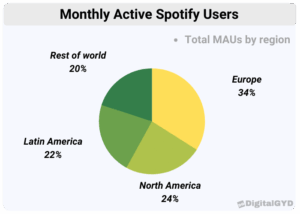I’m undermining the future I’m building. And that might be the smartest thing I’ve ever done.
Let me explain. As the founder of Magai, I spend my days building AI that could theoretically replace human writers. I go home and teach my creative writing. I create automation tools all morning, then insist my team handles certain things manually all afternoon.
Am I a hypocrite? Or have I stumbled onto the most important principle of innovation that nobody wants to admit?
The Uncomfortable Truth About Building Tomorrow
Here’s what they don’t teach you in startup accelerators: The best founders aren’t just disruptors. They’re preservationists.
Shocking, right? In a world that worships at the altar of “move fast and break things,” suggesting we should protect anything sounds like heresy.
But after years of building in the AI space, I’ve discovered something that changes everything. The deeper you go into creating the future, the more you realize which pieces of the past must survive.
Every founder eventually faces this paradox:
- You’re creating tools that make old ways obsolete
- While discovering some old ways contain irreplaceable wisdom
- You’re racing forward but constantly looking backward
- You’re building bridges while everyone else is burning them
This isn’t hypocrisy. It’s responsibility.
Why Pure Disruption is Destructive
Silicon Valley has a religion: Disruption.
If it’s old, break it.
If it’s slow, accelerate it.
If it’s human, automate it.
But hold your horses—what happens when you worship disruption without discrimination?
You digitize connection and wonder why everyone’s lonely. You automate creativity and wonder why everything looks the same. You optimize for efficiency and wonder why nothing has soul.
Sound familiar?
This is exactly why I refuse to create an AI version of myself. Not because I can’t—trust me, the technology is there. But because I shouldn’t.
Some things are meant to remain uniquely human.
The Hidden Cost of Breaking Everything
Let’s dig into what actually happens when founders forget to preserve while they innovate.
Remember Blockbuster? Everyone loves mocking them for not adapting. But here’s what we lost: The Friday night ritual of browsing movies with family. The serendipitous discovery of films you’d never search for online. The human recommendation from the film buff behind the counter.
Netflix is better in every measurable way. But what about the unmeasurable?
This pattern repeats everywhere:
- Social media connected us globally but disconnected us locally
- Food delivery apps brought convenience but killed spontaneous neighborhood discoveries
- Dating apps increased options but decreased genuine connection
Are we building a more efficient future? Absolutely. But is it a better one?
What’s Actually Worth Protecting
After years of building and watching innovations rise and fall, I’ve identified what deserves fierce protection:
1. The Struggle That Builds Character
Here’s an uncomfortable truth: The struggle isn’t a bug to be fixed—it’s the feature that creates excellence.
AI can write your kid’s essay in seconds. But you know what it can’t do? Build the mental muscle that comes from wrestling with words. Develop the voice that emerges from frustration. Create the satisfaction that comes from finally nailing that conclusion.
This is why the championship mindset matters more than ever. Champions aren’t built by shortcuts.
2. Beautiful Inefficiencies
Not everything needs to be optimized.
Read that again.
Not. Everything. Needs. To. Be. Optimized.
Yes, I could automate every customer interaction at Magai. But the “inefficiency” of human support creates something automation never will: genuine connection, unexpected insights, and the kind of loyalty that comes from being truly heard.
Sometimes the long way is the right way. Sometimes friction creates value.
3. The Craftsman’s DNA
The artisan’s advantage isn’t nostalgia—it’s necessity.
Master craftsmen use power tools. But they still understand wood grain. They still feel the material. They still know exactly when the machine should stop and the hand should begin.
Why? Because understanding your craft at the deepest level is how you know which parts to automate and which to protect.
The best AI users will be those who mastered the fundamentals first.
4. Space for Deep Thinking
AI gives instant answers. Fantastic.
But what about the questions that matter? The ones that require pondering, not processing?
The dangerous gap between using AI and building AI isn’t technical. It’s philosophical. We need to protect the space for deep thinking, even as—especially as—we build tools for quick execution.
The Weight of the Crown
Let me tell you something nobody mentions about being a founder: You’re not just building products. You’re building futures.
And that comes with responsibility most of us didn’t sign up for.
You become a guardian as well as an innovator. A protector as well as a disruptor. You have to ask uncomfortable questions:
- What happens to human agency when everything’s automated?
- Which inefficiencies are actually protecting something valuable?
- What skills will humans need when AI can do everything?
- How do we innovate without erasing wisdom?
These aren’t questions with clean answers. But avoiding them? That’s how you build a future nobody wants to live in.
Building Bridges, Not Burning Them
So what’s the solution? Stop innovating?
Absolutely not.
The answer is to innovate thoughtfully. At Magai, every feature goes through what I call the “Bridge Test”:
- Does this connect old wisdom with new capability?
- Does this enhance human ability or replace it?
- Does this preserve what matters while improving what doesn’t?
This is why the death of niche AI tools doesn’t worry me. The tools that survive won’t be the ones that replace the most. They’ll be the ones that enhance the best.
The Practical Playbook
Enough philosophy. How do you actually build the future while protecting the past?
1. Study Before You Disrupt
That “outdated” process you’re about to obliterate? Understand why it exists first.
I learned this the hard way when teaching my kids about AI. My instinct was to jump straight to the tools. But first, I had to understand why traditional communication skills mattered.
Turns out, they mattered more than ever.
2. Listen to the Elders
The people doing things the “old way” for decades? They’re not dinosaurs. They’re historians.
They know things that aren’t in any startup playbook. They understand second-order effects you haven’t considered. They’ve seen innovations come and go.
Listen before you disrupt.
3. Include the Disrupted
Want to know what’s worth preserving? Ask the people whose world you’re changing.
When technology meets purpose, something magical happens. But you only find that purpose by including those who’ve been carrying it.
4. Test for Unintended Consequences
Every innovation has ripple effects. Think beyond the immediate efficiency gain.
What behaviors will change? What rituals will die? What connections will break? Is the trade-off worth it?
5. Have the Courage to Say No
This is the hardest one.
Just because you can build something doesn’t mean you should. The emperor has no clothes when it comes to many “innovations” that are really just destruction in disguise.
Sometimes the most innovative act is refusing to innovate.

My Vision for Tomorrow
Here’s what I’m building toward with Magai: Technology that amplifies human potential without erasing human essence.
This looks like:
- AI that makes you a better writer, not a non-writer
- Tools that create time for what matters, not eliminate what matters
- Innovation that honors wisdom rather than mocking it
- Progress that brings everyone forward, not just early adopters
Is this harder than pure disruption? You bet.
Does it require more nuance, balance, and wisdom? Absolutely.
Is it the only way to build a future worth living in? Without question.
Your Role in the Paradox
Think you’re off the hook because you’re not a founder? Think again.
Every time you choose a new tool or maintain a tradition, you’re voting. You’re deciding which future we build together.
Ask yourself:
- What am I protecting as I embrace the new?
- Which bridges am I building between past and future?
- How can I honor wisdom while pursuing innovation?
The future needs people who understand this paradox. Who can hold two truths simultaneously. Who know that tomorrow can be better than today while recognizing that some pieces of yesterday are worth carrying forward.
The Bottom Line
The founder’s paradox isn’t a problem to solve. It’s a tension to manage.
The most successful founders of the next decade won’t be the ones who disrupt the most. They’ll be the ones who preserve the best while building the rest.
So yes, I’m building AI that could replace writers while teaching my kids to be creative writers. I’m automating processes while protecting human connection. I’m racing toward the future while carefully carrying pieces of the past.
This isn’t contradiction. It’s construction.
The future worth building needs both innovation and preservation. Both disruption and protection. Both courage and wisdom.
The question isn’t whether you’ll face this paradox—you will. The question is whether you’ll embrace it thoughtfully or stumble through it blindly.
Choose thoughtfully. The future depends on it.
What are you building, and what are you protecting? The best founders—the best humans—do both.



